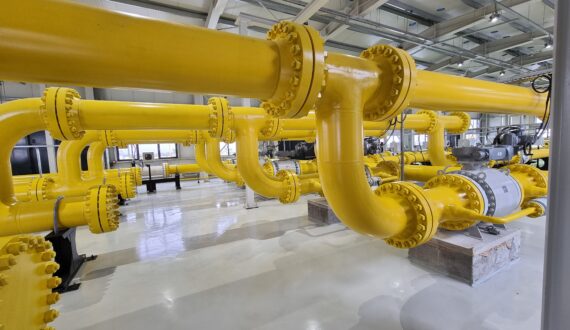A huge energy crisis has affected the whole globe and especially the European Union. Initially motivated by the unprecedented slowdown in energy consumption during the first pandemic wave, followed by a solid and unexpected recovery, fully seasoned with the unpredictability of the next pandemic waves and fully manipulated by the Russian Federation, the European energy market simply exploded. We have helplessly witnessed increases 4-5 times in the case of natural gas and 2-3 times in electricity, trying to find explanations and identify response measures for consumer protection.
As if the situation created in the second half of 2021 was not enough, we have been witnessing a bloody and unjust aggression against Ukraine since the beginning of this year, putting an excess of stress on the energy systems.
In the face of these events, Member State governments have been quick to assess the economic impact and limit rising inflation and hurting vulnerable consumers. The measures taken were presented in a wide range, from offering vouchers, to capping, to regulating producer prices, etc. Precise instructions from the European Commission have been expected in vain and I think it was predictable, given the different situation of the Member States in relation to: dependence on imported gas, percentage of gas-based electricity production, degree of energy independence, the mix of resources, the affordability of the consumer, etc.
Of course, such a serious situation has created many topics of debate and even opposition, including discussions about the limitations of the European market model (market design), the sustained policy of the last decades in relation to increasing the percentage of renewable energy and supporting related investments. , the mechanisms for manipulating the price of CO2 certificates, the need for a common gas storage policy, and much more.
I will briefly resume the stages by which Romania understood to react to this crisis, but I will stop more attentively to what I consider most relevant at this moment, to the consequences and impact that this situation and the response measures will have on energy industry, on consumers and last but not least, on the national economy in the medium term.
I specify from the beginning that any variant of action would have been chosen, it would still have disappointed some or others, and in this situation there is no perfect solution, but only an optimal one. Far from being optimal, the first variant of the government, modified by the Parliament in an even more unfortunate way, managed to meet several disadvantages. He designed an extremely complicated and sometimes impossible mechanism to implement, in a complex of measures aimed at both compensating some consumers and capping prices to the supplier, over which a curious system of overcharging the revenues of some producers was applied, except for some explicable, but extremely unhappy in image, those that produce from fossil sources.
Of course, this scheme has malfunctioned, as it has neglected key elements in the industry’s value chain, such as distributors and energy carriers, put producers at renewable risk at extreme risk, and made it virtually impossible to pay compensation and capping to suppliers.
From the outset, the government assumed the need for changes, based on the experience of applying the scheme for the first months. Thus, at the beginning of the year, GEO 3/2022 appeared, which improved the mechanism somewhat in some places, but made other errors that caused other damages, mainly to the electricity and gas suppliers, whose costs were not recognized.
Starting with April 1, not being a hoax, a new emergency ordinance entered into force, which represents a significant evolution compared to the first two attempts and which wants to act for a period of one year. Perfecting this, too, as a result of intense consultations between the government and industry, it is a good idea to have it discussed or not in Parliament. There is a good chance that an approved option will emerge from the approval in Parliament, as the industry through its representatives will be consulted in good faith.
It should be noted that especially in the case of Romania, the energy price crisis should be a zero-sum game, which makes it easier for the government to bear. I say this because, for the most part, what is lost by capping prices is gained by producers whose primary resources have not changed in value, the vast majority of whom are producers with majority state capital. The overcharging scheme should provide much of the money that the government has to return to suppliers as a result of the price cap. However, there is, on the one hand, a delay between the time of recording the increase in revenue or the application of the surcharge and the time of return to the supplier, which creates a cash flow problem for the state budget, and there is also a difference. which can be significant between revenues and expenditures, given the imported energy, the increase in production costs due to direct or indirect effects.
The medium-term impact of implementing this scheme will be felt at several levels. I would start with the operational level of the energy distribution and transmission segment, where the lack of coverage by budget compensation of the difference between the value of energy purchased for technical losses and the value recognized by the tariff, will determine a precarious financial situation of this segment. reduced investment, increased insolvency risk, enormous pressure to increase tariffs for the coming years, which will lead to medium and long-term supply of high prices, especially for electricity.
Next, I will refer to the segment of energy suppliers, where the effects of this legislation will reduce the pressure on identifying cheap energy sources, will blur the competitiveness of the sector and to the extent that budget settlements will not be made in time, will increase the need to the extent that it could become uneconomic. At the same time, it generates a tendency to reduce the number of clients and not to re-contract with the clients whose contract expires, leaving them in a market that will increase the volume of compensations from the state budget.
In the specific case of gas producers, price capping is a re-regulation of the market, with known risks and pressure on producers’ budgets.
But important effects have to appear at the level of consumers and I want to highlight the most important ones, from the multitude of implications. First of all, it must be very clear that those household consumers who consume more than 300kwh / month of electricity (I estimate that about 1 million fall here), will not benefit from any protection offered by this ordinance and will be subject to the prices of market. That is why it is very important for every consumer to properly assess their consumption and make sure that it falls within these limits. In the case of natural gas consumers, the limit is much more generous (50,000 MWh / year), which includes all domestic consumers and most industrial ones.
A curious feature of this legislation is that it protects non-household consumers (except for large electricity consumers), fully protecting them, setting a total ceiling of 1 RON for kwh of electricity. Whether you have an office building or a small factory, you benefit from this capping, a mistake from my perspective. Such measures discourage investment in energy efficiency and even if the price is low, it encourages inefficient consumption which will create a weakness in the medium and long term.
Read more on www.financialintelligence.ro
Corneliu Bodea, CEO Adrem and President of CRE: The medium-term impact of energy price cap measures








